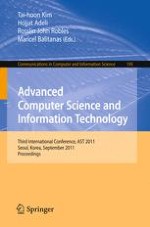This volume constitutes the refereed proceedings of the Third International Conference on Advanced Science and Technology, AST 2011, held in Seoul, South Korea, in September 2011. The 37 revised full papers presented in this volume were carefully reviewed and selected from numerous submissions. The papers feature ideas, problems and solutions relating to the multifaceted aspects of the Advanced Science and Technology, such as communication and networking; ubiquitous multimedia computing; security technology and information assurance; computer science, software engineering and applications thereof; bio-science and bio-technology; u- and e-service, science and technology; database theory and application; control and automation; signal processing, image processing and pattern recognition; as well as grid and distributed computing.
